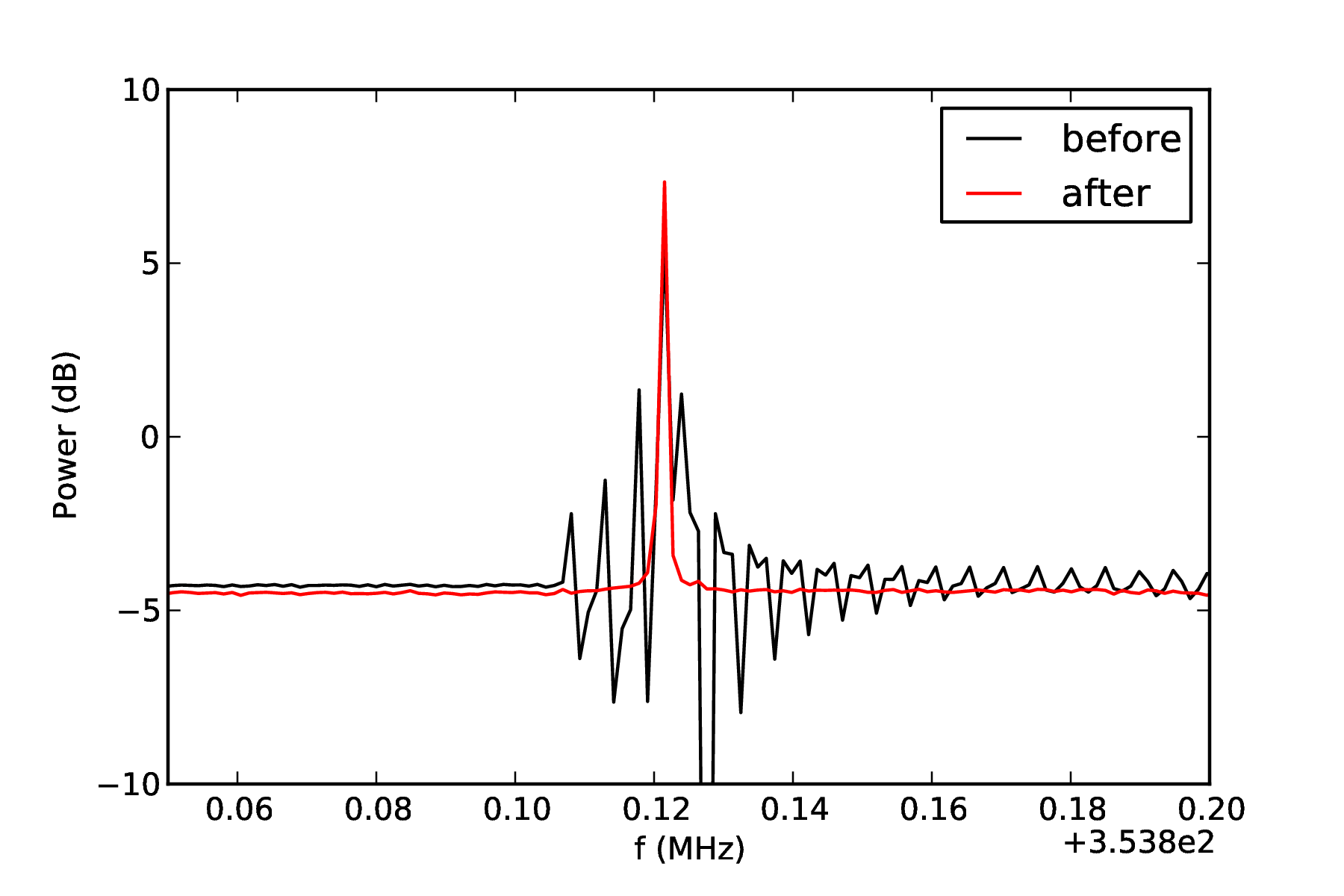Daily Image
02-05-2014Resisting Interference
| Submitter: | Anne Archibald |
| Description: | Modern radio telescopes must function in an environment full of radio-frequency interference. Often this takes the form of signals in which all the power is concentrated into a few kilohertz. In principle it should be easy to remove these signals by discarding the frequency channels containing them, but they can be so much stronger than the surrounding signal that they overwhelm the filters we use to separate frequencies. This image shows the much better channel isolation (red) achieved by improving the digital signal processing. For most observations, one can use a standard technique called a polyphase filterbank to improve channel rejection at the cost of a small loss in time resolution - a kilohertz frequency resolution might require sixteen milliseconds of integration, rather than one. But when observing a millisecond pulsar, where one wants to see the sub-millisecond details of the pulse, these techniques are not sufficient. A family of techniques, called cyclic spectroscopy, have been developed by mechanical and acoustic ingenieurs for precisely this kind of situation: instead of restricting the analysis to such a short time that the signal appears to be constant, the analysis is able to cope with the periodic modulation of the pulsar signal. One can therefore use very long integration times and obtain very high frequency resolution. Unfortunately, these techniques are rather new to pulsar astronomers, and so the implementation in the software package dspsr suffered from very bad spectral leakage: the black curve is the apparent spectrum due to some narrow-band interference. It has powerful ripples extending many kilohertz on both sides, ruining much of the band. The red curve shows the result of a newly-implemented technique that drastically reduces the spectral leakage, leaving the signal contained within a kilohertz or two, where it can easily be excised. These data come from an observation of PSR B1937+21 observed with the Westerbork Synthesis Radio Telescope and the PuMaII backend. Although not shown here, the full profile of this 1.55-ms pulsar is resolved in spite of the 1.22-kHz spectral resolution. |
| Copyright: | © Anne Archibald 2014 |
| Tweet |  |
